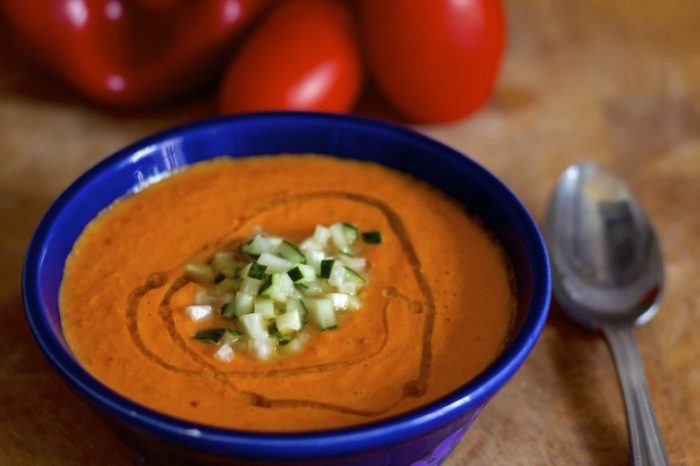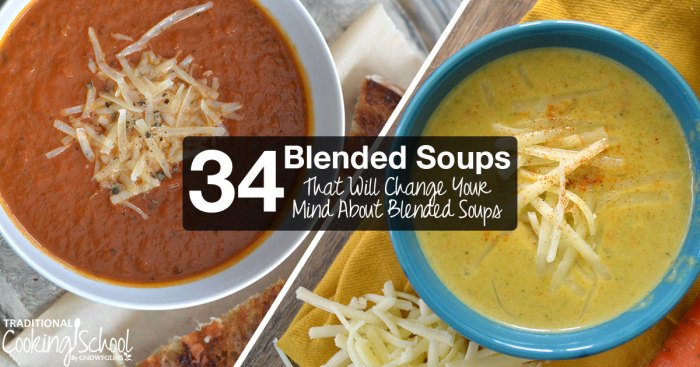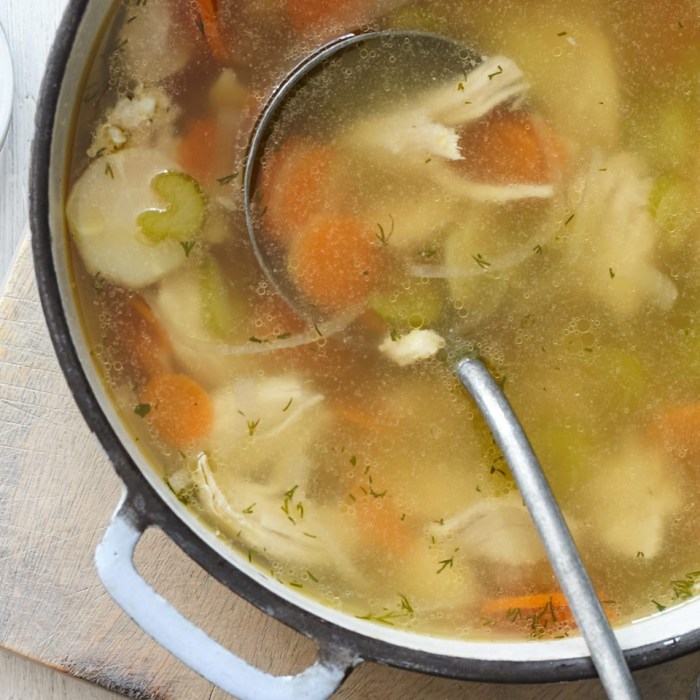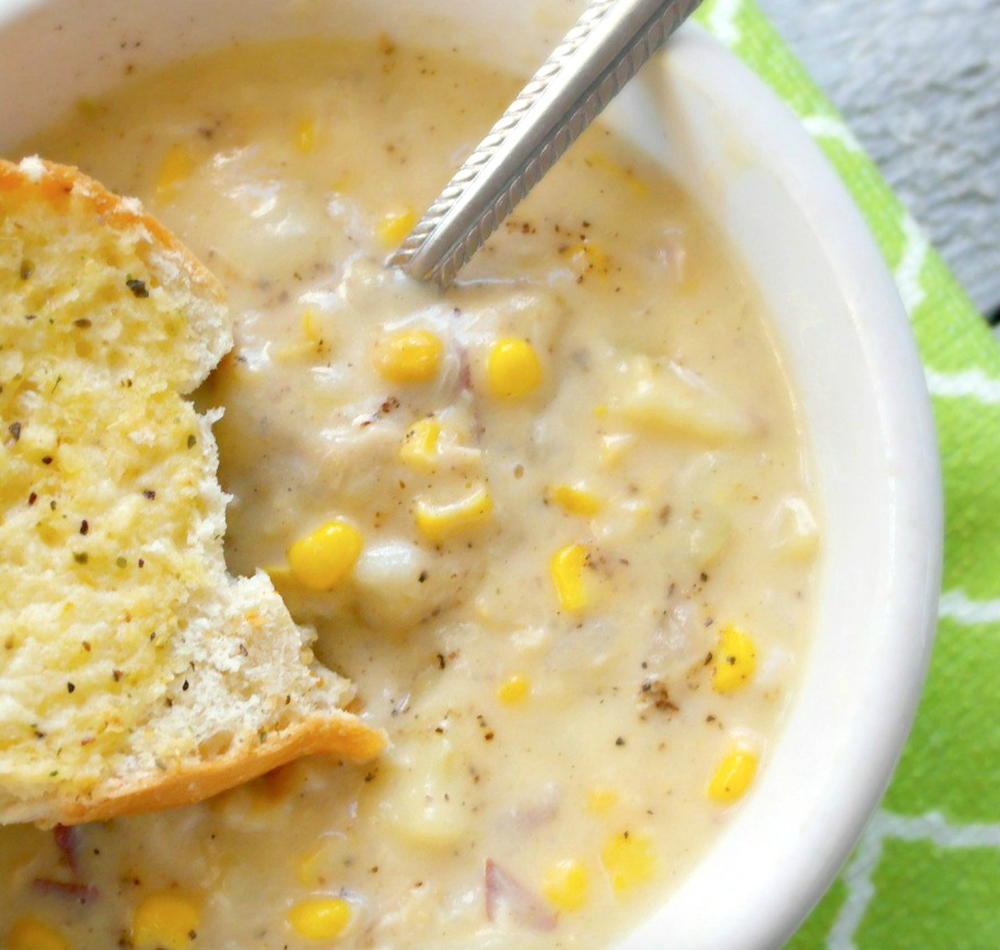Pureed Soups: A Culinary Exploration: Pureed Soup Recipes
Pureed soup recipes – Pureed soups offer a delightful and versatile culinary experience, appealing to a wide range of palates and dietary needs. Their smooth texture makes them easily digestible, making them a perfect choice for infants, the elderly, and individuals with digestive sensitivities. This exploration delves into the diverse world of pureed soups, from their historical context and essential techniques to creative flavor combinations and serving suggestions.
Introduction to Pureed Soups, Pureed soup recipes
Pureed soups, characterized by their smooth and creamy consistency, are created by blending cooked ingredients until completely smooth. This process not only enhances digestibility but also creates a luxurious texture that is both comforting and sophisticated. Their benefits extend beyond ease of consumption; pureed soups are incredibly versatile, allowing for endless flavor explorations and ingredient combinations. Historically, pureed soups have played a significant role in various cuisines, often adapted to local ingredients and culinary traditions.
For instance, many cultures have versions of creamy vegetable soups that have been passed down through generations.
Essential Ingredients and Techniques
The foundation of any delicious pureed soup lies in the quality of its ingredients and the precision of its preparation. Common base ingredients include flavorful broths (vegetable, chicken, or beef), a variety of vegetables (carrots, potatoes, celery, onions), and sometimes legumes or grains for added richness and protein. Achieving a perfectly smooth texture is key; this is accomplished through careful blending and the choice of the right equipment.
Several methods can be used to puree soup. Each has its own advantages and disadvantages:
| Method | Pros | Cons |
|---|---|---|
| Immersion Blender | Convenient, directly purees in the pot, minimizes cleanup | Can be less effective at creating a completely smooth texture, may splatter |
| Regular Blender | Creates a very smooth texture, good for larger batches | Requires transferring hot soup, potential for burns, may not handle very thick soups easily |
| Food Mill | Creates a very smooth texture without incorporating air, ideal for delicate ingredients | More time-consuming, requires more manual effort |
Recipe Categories and Variations

Source: traditionalcookingschool.com
Pureed soups can be broadly categorized by their primary ingredients, opening up a world of flavor possibilities. Adapting recipes to accommodate various dietary restrictions is straightforward, often involving simple substitutions.
- Vegetable Pureed Soups:
- Creamy Carrot and Ginger Soup: A subtly sweet and spicy soup with a vibrant orange hue.
- Classic French Potato Leek Soup: Rich and savory, this soup showcases the elegance of simple ingredients.
- Roasted Butternut Squash Soup with Sage: Earthy and warming, this soup is perfect for cooler evenings.
- Tomato Pureed Soups:
- Roasted Red Pepper and Tomato Soup: Smoky and intensely flavorful, this soup is a crowd-pleaser.
- Classic Tomato Soup with Basil: A simple yet elegant soup, perfect for a light lunch.
- Spicy Tomato and Black Bean Soup: A hearty and flavorful soup with a southwestern flair.
- Legume Pureed Soups:
- Creamy Lentil Soup with Turmeric: A warming and nutritious soup with a vibrant yellow color.
- Red Lentil and Coconut Milk Soup: Rich and creamy, this soup offers a delightful balance of flavors.
- White Bean and Garlic Soup: Simple yet satisfying, this soup is perfect for a weeknight meal.
Vegetarian and vegan adaptations are easily achieved by using vegetable broths and omitting any animal products. Gluten-free versions are ensured by avoiding ingredients containing gluten, such as barley or wheat.
Flavor Combinations and Enhancements
The art of pureed soup making lies not only in the quality of the ingredients but also in the skillful use of flavor pairings. Herbs, spices, and citrus can elevate a simple soup to new heights. A well-chosen garnish adds visual appeal and enhances the overall sensory experience.
| Base Ingredient | Herb/Spice | Citrus | Other Enhancement |
|---|---|---|---|
| Potato | Rosemary, Thyme | Lemon | Cream, Crème Fraîche |
| Tomato | Basil, Oregano | Lime | Chili flakes, balsamic glaze |
| Carrot | Ginger, Coriander | Orange | Toasted nuts, coconut milk |
| Lentil | Cumin, Curry Powder | Lime | Cilantro, Yogurt |
Storage and Serving Suggestions
Proper storage is essential to maintain the quality and freshness of homemade pureed soups. Refrigeration is suitable for up to 3-4 days, while freezing allows for longer storage (up to 3 months). Reheating should be done gently, either on the stovetop or in the microwave, to avoid scorching or altering the texture. Serving suggestions are plentiful; crusty bread, crackers, or even a dollop of crème fraîche or yogurt can complement the flavors beautifully.
To reheat pureed soup without compromising its texture, follow these steps:
- Transfer the soup to a saucepan.
- Heat over low to medium heat, stirring frequently.
- Avoid boiling, as this can cause separation.
- Once heated through, remove from heat and serve immediately.
Visual Guide to Pureed Soup Textures

Source: traditionalcookingschool.com
The visual appeal of a pureed soup is as important as its taste. The texture, whether smooth, chunky, or velvety, significantly impacts its overall presentation.
Pureed soups offer a delightful smoothness and are incredibly versatile. For a hearty and creamy example, consider exploring variations on classic potato soup recipes, such as those found in the outback recipes potato soup collection. These often lend themselves well to pureeing, offering a richer texture compared to other pureed vegetable soup options. Ultimately, the best pureed soup recipe depends on personal preference and available ingredients.
A smooth pureed soup, such as a classic cream of tomato, exhibits a uniform consistency with no visible ingredients. Its color is rich and vibrant, reflecting the intense flavors within.
A chunky pureed soup, such as a lentil soup with some whole lentils remaining, shows visible, small pieces of ingredients within the smooth base. The color may be slightly less uniform due to the presence of these pieces.
A velvety pureed soup, like a butternut squash soup, has an incredibly smooth and luxurious texture, almost silken in appearance. The color is deep and rich, often with a slight sheen.
Clarifying Questions
Can I freeze pureed soup?
Yes, pureed soups freeze well. Allow them to cool completely before storing in airtight containers for up to 3 months.
How do I prevent lumps in my pureed soup?
Use a high-quality blender or immersion blender and blend in stages, scraping down the sides as needed. Ensure ingredients are cooked thoroughly before pureeing.
What are some good garnishes for pureed soups?
Fresh herbs (parsley, chives), a swirl of cream or yogurt, croutons, toasted nuts, or a drizzle of olive oil can enhance both the visual appeal and flavor.
Can I make pureed soup ahead of time?
Absolutely! Many pureed soups taste even better the next day, allowing flavors to meld. Store properly in the refrigerator for up to 3 days or freeze for longer storage.


